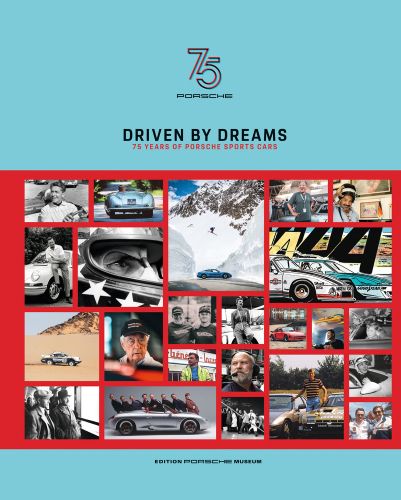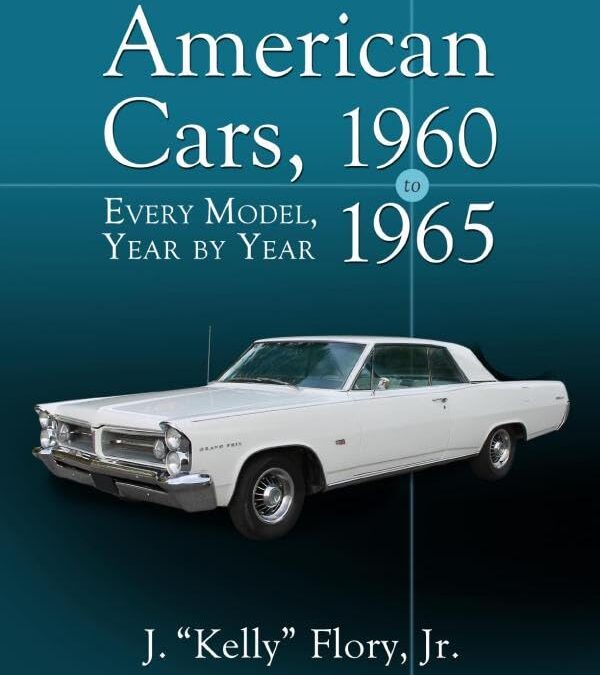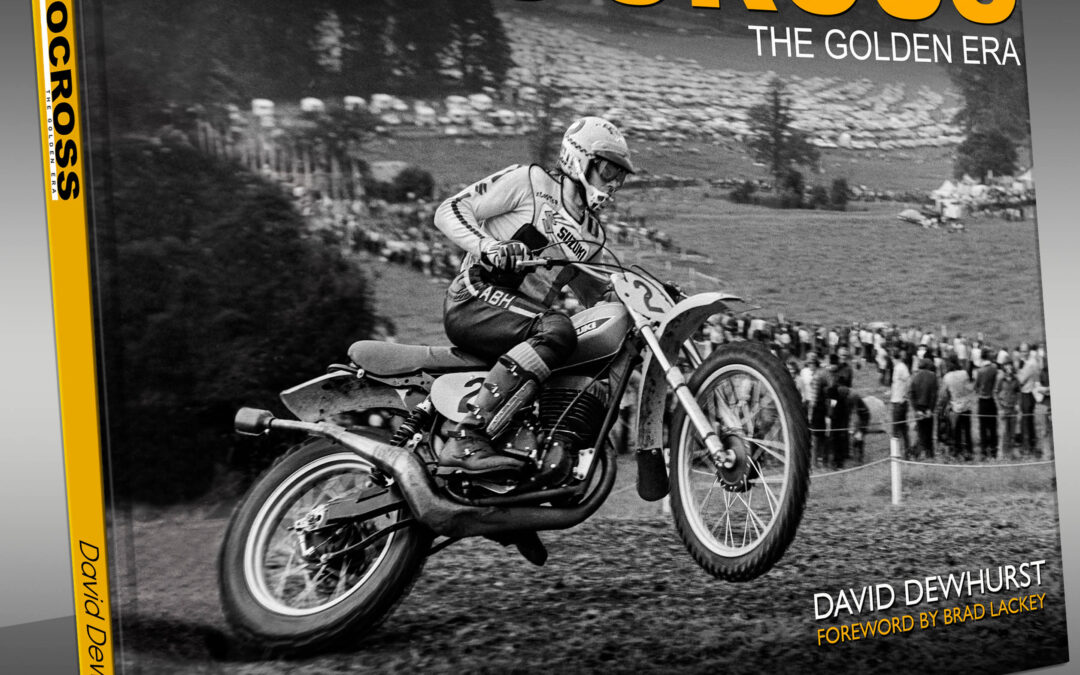
Soulful Driving in Malaysia.
The Thailand edition revealed that CURVES has a passion for Southeast Asia. With this limited special edition, Stefan Bogner now heads to Malaysia. Immerse yourself in the colorful whirl of life, the diversity and exoticism of Southeast Asian cultures, the friendliness of the people, the food and the landscapes.
But if you thought this country consisted only of beautiful beaches, turbulent cities and dense jungle, you need to be proven wrong: The islands and peninsulas between the Indian Ocean and the Pacific Ocean are excellent places to drive! Winding roads lead up into the mountains of the interior or palm-fringed along the coasts, swirling through the country as less frequented and often well-maintained driving pleasure hunters.
- Route suggestions for smaller and larger trips
- Tips on restaurants and accommodation along the way
- Includes map for planning your own road trip and for when you are on the road
So, buckle up, open all your senses, start your engines. Join us on breath-taking tours between the east coast and west coast – into a world of lush greenery, dripping jungle, foreign cultures, adventures and experiences.
Text in English and German.

Cursed awards, haunted estates, and deadly sets.
Hollywood is supposed to be the place where dreams come true, but it’s also where nightmares come to life. Spirits haunt the halls of renowned studios, legendary cafes, and lavish estates, while rumors of curses lurk in the shadows of the rich and famous. It’s said that stars like James Dean, Carrie Fisher, and Prince once predicted their own deaths, while slain screenwriter Paul Bern tried in vain to warn Sharon Tate about her own fate. Ghosts reportedly linger in the corners of the El Coyote Café and the Falcon Lair boasts sightings of Rudolph Valentino long after his death.
Join author and paranormal historian Brian Clune for a star-studded tour of the dark side of Hollywood.

Ride along with author Tom Cotter and photographer Michael Alan Ross as they pilot their Ford Bronco/Airstream Basecamp combination 8,881 miles along the lower 48’s back roads and byways.
Tom Cotter has spent decades ferreting out lost “barn find” collector cars. The process has made him an ardent road tripper, logging thousands of miles every year on America’s back roads. Previous journeys have traced Route 66 in his 1939 Ford Woody wagon and followed the Lincoln highway coast to coast behind the wheel of a 1926 Model T.
Cotter’s journeys led him to wonder: What could be the most epic American road trip? The answer: Key West, Florida, to Deadhorse, Alaska, its thousands of miles recounted in America’s Greatest Road Trip. Cotter and Ross drove across the country, through British Columbia and the Yukon, and finally through Alaska to the literal end of the road. Ross documented their road time in thousands of photographs.
Along the way, the pair met fellow road trippers, adventurers, small-town Americans, world travelers, and rolled through an ever-changing geography from the Gulf of Mexico to the Mississippi Delta to the Great Plains and Mountain states through the Northwest Passage and finally several hundred miles of Alaska’s challenging ALCAN Highway.
Cotter’s observations of Two-Lane America are complemented by Ross’s beautiful photography capturing both the sweep and the detail of life off the beaten path.
Join them on their once-in-a-lifetime journey—you’ll be glad you came along for the ride.

A sports car for race tracks and everyday life: This holds true since the 1984 triumph of legendary four-by-four 911 at the Paris-Dakar rally, the world’s toughest long-distance race. The now re-issued off-road Porsche manages the balancing act of road/sports car and cross-country vehicle better than any other 911 before. In eight chapters the richly illustrated car book depicts the development of the first genuine off-road 911. From the historic genes at the Porsche development center in Weissach to the extensive test drives of the sports car on various continents – a piece of living automobile history.
- Ideal gift for car lovers: High-quality illustrated book on the Porsche 911 Dakar
- Exclusive photos by Porsche photographer Christoph Bauer
- For off-road and motorsport fans: Glimpses behind the scene of vehicle development
- History of the Porsche 911 Dakar: From the first idea to the test drives
- Official Porsche book from the Christophorus edition
Impressive pictures document the development of this special 911 model, limited to 2,500 cars. Christoph Bauer, long-standing Porsche photographer, took the brilliant photos for this volume. Bauer followed the whole process of development – all the time close to the designers. Thus he was able to take spectacular Porsche photos, just for this illustrated car book. Pure Porsche design!

Contrary to popular belief, ‘Fluxie’ did not enter the world on full opposite-lock, nor did he have a cigarette in one hand and a pint in the other. Destined to race, he never got the biggest breaks but he did become one of motorsport’s most colourful and best-loved characters, someone who has always lived life to the full.
Ian Flux’s autobiography tells it how it was, covering not only the highs — including five championship titles — but also the many setbacks. Along the way we laugh with him about much of it, particularly the pranks, but also learn about some dark times that he has never previously divulged.
- Early days: growing up on a farm, first kart aged 6, muddling through in the classroom, lots of laughs — but also sexual abuse from a schoolmaster and an early racing mentor.
- The spark ignites: starting to race in 1970 with a Formula 6 kart, then onwards to Formula Vee; brushing shoulders with Formula 1 working for the Token and Graham Hill teams.
- Grabbing the chances: a Formula Vee title in 1975 leads to Formula 3 and Formula Atlantic, but still with various jobs to make ends meet, including as mechanic to motorcycle racing legend Giacomo Agostini for his four-wheel efforts.
- Diversifying into sports cars: successful adventures in Sports 2000 and Thundersports, winning championships in both, plus Thundersaloons.
- A true all-rounder: going into the British Touring Car Championship from 1988 in a wide range of tin-tops; racing a Jaguar XJR-15 in the big-money 1991 series held at Grand Prix races, including Monaco.
- Championship double in 1996: the ‘golden year’ in the TVR Tuscan Challenge and the British GT Championship, the latter with a McLaren F1 GTR.
- So much else: racing on into recent times, notching up nearly 50 years on track; testing competition cars for Motorsport News; driver tuition and track-day demonstrations.
This is a very different kind of racing driver’s memoir, with lots of laughs along the way together with searing personal honesty.

Bunker Hill is the highest point of downtown Los Angeles, both literally and figuratively. Its circle of life has created a continuous saga of change, each chapter rich with captivating characters, structures, and culture. In Bunker Hill Los Angeles: Essence of Sunshine and Noir, historian Nathan Marsak tells the story of the Hill, from the district’s inception in the mid-19th century to its present day. Once home to wealthy Angelenos living in LA’s “first suburb,” then the epicenter of the city’s shifting demographics and the shadow and vice of an urban underbelly, Bunker Hill survived its attempted erasure and burgeoned as a hub of arts, politics, business, and tourism.
As compelling as the story of the destruction of Bunker Hill is―with all the good intentions and bad results endemic to city politics―it was its people who made the Hill at once desirable and undesirable. Marsak commemorates the poets and writers, artists and activists, little guys and big guys, and of course, the many architects who built and rebuilt the community on the Hill―time after historic time.
Any fan of American architecture will treasure Marsak’s analysis of buildings that have crowned the Hill: the exuberance of Victorian shingle and spindlework, from Mission to Modern, from Queen Anne to Frank Gehry, Bunker Hill has been home to it all, the ever-changing built environment.
With more than 250 photographs―many in color―as well as maps and vintage ephemera to tell his dramatic visual story, Marsak lures us into Bunker Hill Los Angeles and shares its lost world, then guides us to its new one.
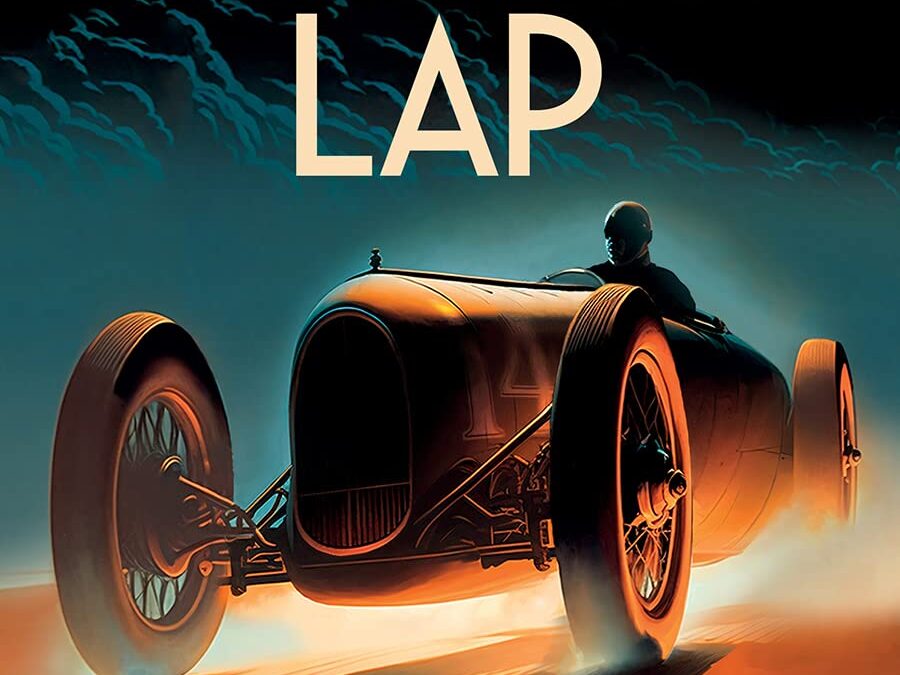
The Last Lap is a gripping inquest into the fast life and mysterious death of racing driver Pete Kreis, infamously killed in practice at the celebrated 1934 Indianapolis 500. In a compelling narrative that reads like a novel, author William Walker’s lifelong obsession with Kreis’s mysterious demise has created a rich story line that takes readers back to the glamorous and dangerous times that marked the beginning of automotive competition.
Much more than a motor racing story, The Last Lap is the tale of a boy who rises from the obscurity of back country Tennessee roads to compete in the world’s fastest and most celebrated races, and the parallel tragic collapse of a rich and powerful Southern family.
Piloting a front-drive race car in practice, Kreis crashed into the wall of Turn One, rode along the top of the retaining wall for seventy-five feet, and careened down an embankment at the south end of the oval. As the car smashed into a tree in the backyard of a nearby house, both men were killed. The next year, an impromptu “coroner’s jury” of Indy drivers and Speedway experts held an intense review of the accident, and they concluded that Kreis’s demise was “the strangest death in all racing history.”
Lifelong racing fan and acclaimed historical author, Walker’s (Betrayal at Little Gibraltar) search to solve the mystery surrounding Kreis’s death has spanned three-quarters of a century and too many miles to count. Walker’s fascination with the mysterious crash is driven by more than a love of racing–Kreis is a distant cousin. The dynamic, nonfiction narrative is the result of a decades long quest in search of the truth—the real story of Pete Kreis, his colorful racing career, and his tragic death.
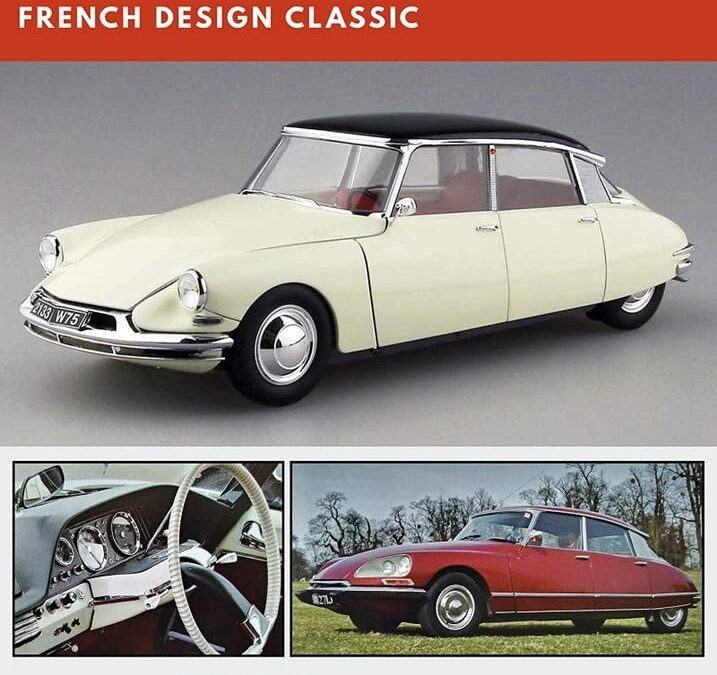
Launched in 1955 yet looking like a sci-fi design proposal for a future then undreamed of, Flaminio Bertoni’s ellipsoid sculpture with wheels that was the Citroën DS stunned the world.
There was a near riot at the 1955 Paris Motor Show launch of the car, orders flooded in for this, the new ‘big Citroën’ (a Voiture a Grande Diffusion or VGD) as the car that replaced the legendary Traction Avant range.
The term ‘DS’ stems from two Citroën parts of nomenclature – the type of engine used as the 11D, (D) and the special hemispherical design of the cylinder head as ‘Culasse Special’ (S): DS out of ‘Deesse’ or Goddess, was a more popular myth of ‘ DS’ origination, but an erroneous one.
But it was not just the car’s aerodynamically advanced body shape (Cd. 0.37) that framed the genius of the DS: hydro pneumatic self-levelling suspension, advanced plastics and synthetics for the construction of the roof and dashboard/fascia, and amazing road holding and cabin comfort were some of this car’s highlights.
Only the lack of an advanced new engine was deemed a missed opportunity. In fact Citroën had created a new engine for the car but lacked the resources to produce it in time for 1955.
DS was a major moment in the history of car design, one so advanced that it would take other auto manufacturers years to embrace. Yet DS in its ‘aero’ design was the precursor to today’s low drag cars of curved form.
Manufactured worldwide, used by presidents, leaders, diplomats, farmers and many types of people, the DS redefined Citroën, its engineering and design language, and its brand, for decades to come.
Prone to rust, not the safest car in the world, and always lacking a smoother powerplant, the DS still became an icon of car design.
Reshaped with a new nose and faired-in headlamps in 1967, DS remained in production until 1975.
Across its life DS spawned an estate car variant as the ‘Safari’, a range of limousines, two-door convertibles, and even coach-built coupes and rally specials.
This car was a product design that became an article of social science – it was that famous and it defined a European design movement upon a global stage then packed with ‘me too’ copyist designs.
The DS or ‘Goddess’ as it was tagged, was a tear-drop shaped act of French confidence in a world of the regurgitation of the known. Some argue that DS and its effect has never been surpassed.
This new value-for-money book provides innovative access to the design, history, and modeling of the revolutionary DS – one of the true ‘greats’ of motoring history and, a contemporary classic car of huge popularity.

Explore the thrilling illustrated story of NASCAR stock car racing in America with this stunning celebration filled with evocative photography, legendary drivers, and a decade-by-decade history.
NASCAR 75 Years captures the greatest moments throughout the decades: from the beaches of Daytona to the jaw-clenching competition, the mind-bending technology, the triumphs, the teamwork, and the high-speed thrills. Large-format photography from throughout NASCAR history brings it all to life alongside narratives written by a roster of veteran NASCAR reporters and historians.
Follow NASCAR’s growth from a small, innovative family business to a leader in sports entertainment, witnessed each week by millions in person and on national television. The authors show the evolution of the vehicles—from modified family sedans to 700-horsepower race-built behemoths, all the way through the “Next Gen” cars that debuted in 2022—and celebrate the drivers who have piloted them around tracks like Daytona, Talladega, Darlington, Las Vegas, and more —legendary heroes with names including Flock, Weatherly, Petty, Allison, Yarborough, Earnhardt, Waltrip, Gordon, Stewart, Johnson, Busch, all battling wheel to wheel, week after week, across the United States.
This beautifully designed and extensively illustrated book provides the ultimate history of the legendary series, celebrating the drivers, crew chiefs, pit crews, owners, and tracks, from the earliest days on Florida’s beaches right through to today’s superspeedways, short tracks, and road courses. Compiled by authors with a passion for motorsport, NASCAR 75 Years is a volume no fan can be without.
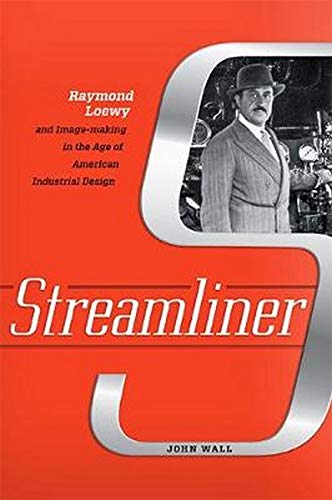
The true story of Raymond Loewy, whose designs are still celebrated for their unerring ability to advance American consumer taste.
Born in Paris in 1893 and trained as an engineer, Raymond Loewy revolutionized twentieth-century American industrial design. Combining salesmanship and media savvy, he created bright, smooth, and colorful logos for major corporations that included Greyhound, Exxon, and Nabisco. His designs for Studebaker automobiles, Sears Coldspot refrigerators, Lucky Strike cigarette packs, and Pennsylvania Railroad locomotives are iconic. Beyond his timeless designs, Loewy carefully built an international reputation through the assiduous courting of journalists and tastemakers to become the face of both a new profession and a consumer-driven vision of the American dream.
In Streamliner, John Wall traces the evolution of an industry through the lens of Loewy’s eclectic life, distinctive work, and invented persona. How, he asks, did Loewy build a business while transforming himself into a national brand a half century before “branding” became relevant? Placing Loewy in context with the emerging consumer culture of the latter half of the twentieth century, Wall explores how his approach to business complemented―or differed from―that of his well-known contemporaries, including industrial designers Henry Dreyfuss, Walter Teague, and Norman Bel Geddes. Wall also reveals how Loewy tailored his lifestyle to cement the image of “designer” in the public imagination and why the self-promotion that drove Loewy to the top of his profession began to work against him at the end of his career. Streamliner is an important and engaging work on one of the longest-lived careers in industrial design.

Celebrate six decades of outrageous, unforgettable Lamborghini cars with this must-have volume featuring fascinating history and stunning photography.
Sixty years ago, Ferruccio Lamborghini put the sports car world on notice with the introduction of his V-12-powered 350 GT. Just three years later, in 1966, Lamborghini stunned the automotive establishment with its introduction of the stunning Miura, the first mid-engine production car. Rivals at the 1966 Geneva Auto Show could only stare in wonder. Wrapped in a svelte Marcello Gandini–penned body and powered by a 350-horsepower V-12, the Miura instantly made every other sports car look antiquated, including those offered by Lamborghini’s Italian rival, Ferrari. It would be two years before Ferrari offered its own mid-engine reply in the form of the 206 Dino GT.
For Lamborghini, there was the time before the Miura and the time after the Miura. It marked a sea change not only for the Sant’Agata manufacturer but for the sports car world broadly. The Supercar had arrived.
In 1974, Lamborghini again shocked the automotive world with the mad Countach (an Italian expression one might utter at the sight of a beautiful woman), another Gandini masterpiece. Wide, low, and purposeful, the Countach completely redefined the supercar template, in the process becoming the poster car of choice for children of all ages the world over.
As Supercars evolved to Hypercars, Audi acquired Lamborghini, giving new life to the firm and unleashing a series of amazing cars from the Murcielago to the Gallardo to the Aventador and Huracan. Today, there is even the all-purpose Urus SUV!
In this richly detailed survey spanning 60 years of extreme performance, each of Lamborghini’s seminal cars is detailed and complemented by historic and commissioned photography and technical specifications. Captivating to read and beautiful to behold, Lamborghini Supercars: 60 Years belongs in every sports-car fan’s collection.
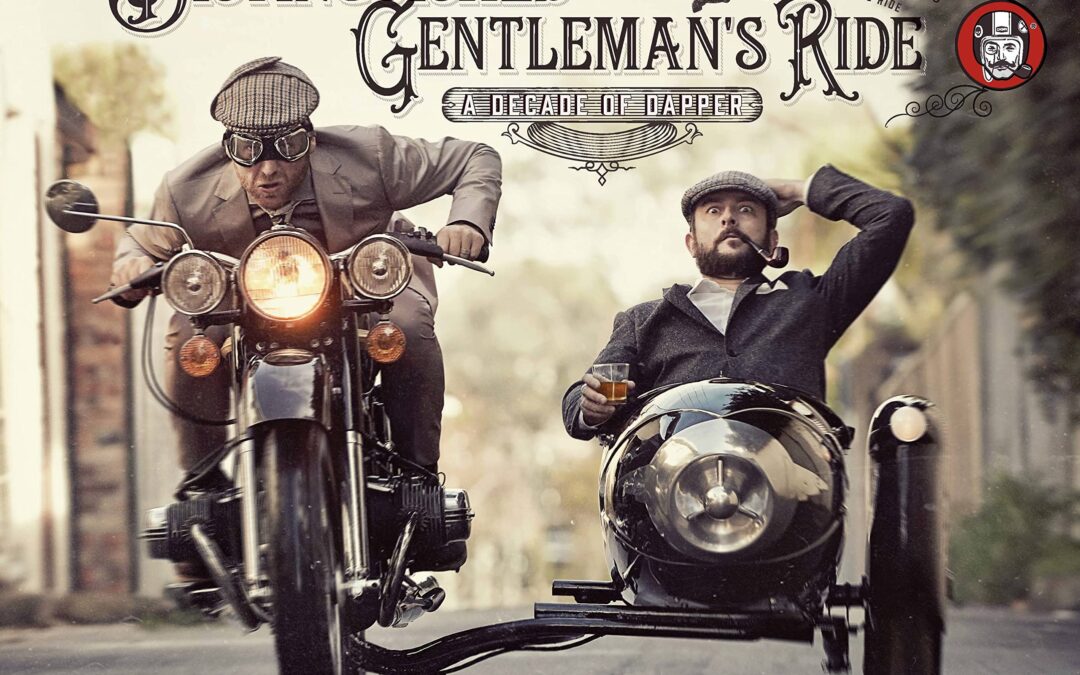
The Distinguished Gentleman’s Ride: Decade of Dapper documents and celebrates 10 years of raising funds and awareness for men’s health initiatives with engaging stories and gorgeous photography. Starting from the simple, joyous act of riding a motorcycle, The Distinguished Gentleman’s Ride (DGR) has united hundreds of thousands of smartly dressed gentlefolk around the world on classic and vintage-style motorcycles to raise
over $35 million for prostate cancer and men’s mental health initiatives. The annual event has attracted the world’s attention and created some truly amazing stories (and thousands of great images) along the way.
The success of the DGR has seen it become so much more than just a charity event. It’s now a kind of global moto family that’s made up of thousands of incredible stories, characters, cities, and ambassadors that are all wrapped up in a kind of motorcycling fashion renaissance. It’s as much about the amazing people that make it happen as it is about the bikes.
The Distinguished Gentleman’s Ride is filled with:
- Engaging stories about the riders and what motivates them
- Dapper fashion and stunning images from dozens of celebrated moto photographers in some of the world’s most iconic locations
- Personal contributions from the likes of actor and TV presenter Charley Boorman, MotoGP world champion Freddy Spencer, and actor Jai Courtney
As a lasting record of the hundreds of stories of triumph and heartbreak from the DGR family, this book brings to life the positive, global impact that motorcyclists have made on men’s health.
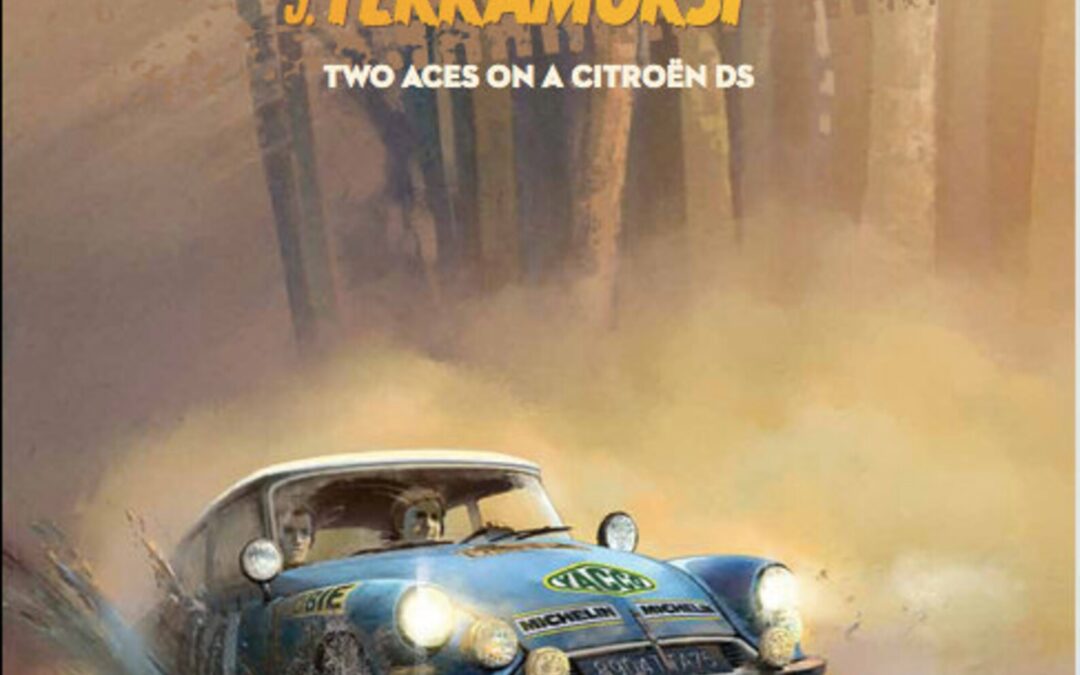
The 2nd graphic novel by Bob Neyret, this time his famous collection of rally adventures with the most faithful of his companions: Jacques Terramorsi.
English version of the hit comic book “PAIRE D’AS FOR A DS”, special edition YACCO 100 years
Invited by D.S , the new brand, for the inauguration of the Peking D.S SHOP on the 60TH anniversary of Citroen DS in 2015, Rally driver Bob Neyret meets, on the flight, Sophie a young motor sport journalist who seems to know nothing about the golden age of the D.S, nor the close link between the driver and his car. He begins telling her about his life through very original anecdotes, from his early days in France to the major international rallies.
But young Sophie can’t believe her ears … But who are really this famous Bob and his Terra, his co-driver?
See for yourself!

Satisfy your dream collector-car desires with this one-stop reference for starting or expanding your collection beyond traditional classics and muscle cars.
Focusing on the interests and needs of Generation X and Millennial car collectors, The NextGen Guide to Car Collecting offers a concise history of car collecting to present day, guidance on car buying and living the car-collector life, and an overview of collector cars with a focus on cars built from the 1970s through the 1990s while also touching on more contemporary cars. Chapters highlight Japanese, American, and European cars, particularly those models that have experienced the greatest growth in collector interest over the past decade.
The NextGen Guide to Car Collecting explores the many ways the Internet and social media have changed the classic car marketplace. You’ll learn how to buy a classic car online without suffering buyer’s remorse, as well as the four critical keys to a happy collector-vehicle relationship: 1) possessing discretionary cash for the initial purchase; 2) obtaining a thorough knowledge of the car and its ownership; 3) the critical pre-purchase inspection; and 4) access to a work space.
You’ll also find out why the popularity of late twentieth-century specialty cars will continue to grow (think increasing electronic complication and the still-large number of enthusiasts for whom “self-driving” means driving themselves) and explore the attributes that makes these cars desirable collector vehicles.
In addition, the book looks at the significant increases in quality and reliability of post-1970s machines and how that impacts their collectibility. Finally, learn why expectations that your newfound classic could outlast our current crop of lithium-ion-dependent electric cars may not be unrealistic: recent developments like ride-hailing and sharing services; expanded public transit; rental bikes and scooters; and garage condos and other storage options could actually extend the life of your “new” classic permitting you to truly tailor the use of your classics.
Whether your collection requires a one-stall garage or a pole barn, the practical, useful information and keen perspective of The NextGen Guide to Car Collecting will ensure you pull this volume from your shelf time and again.
